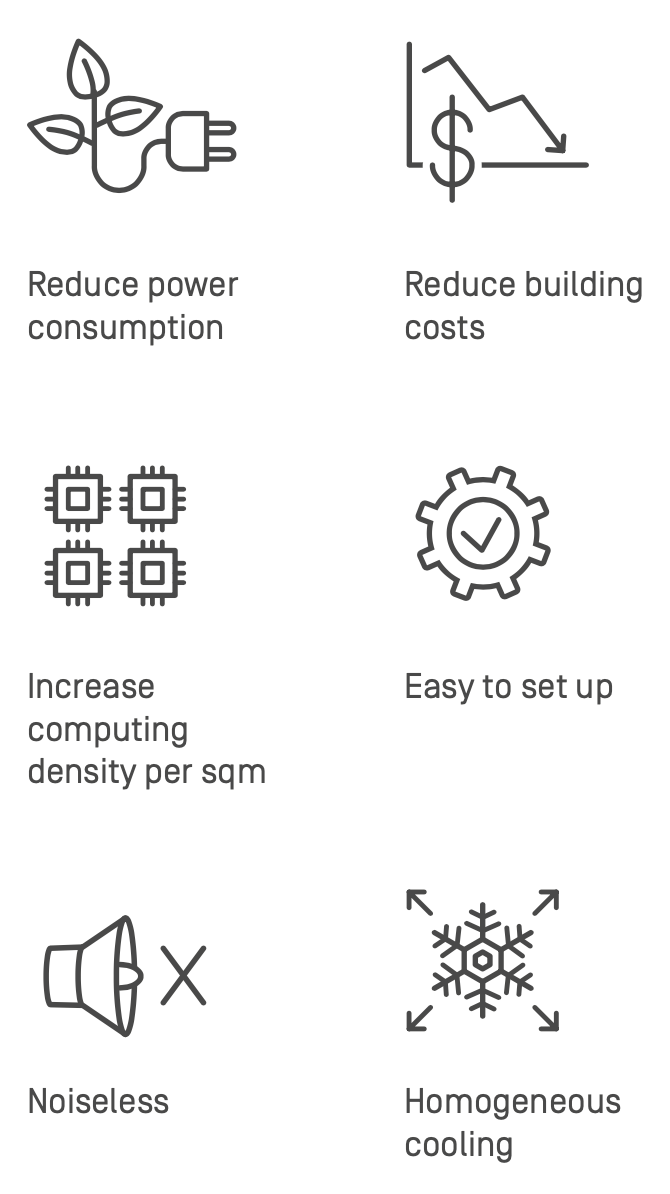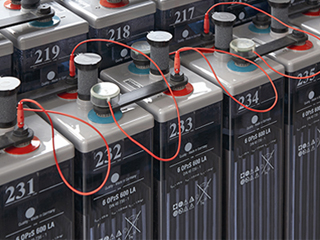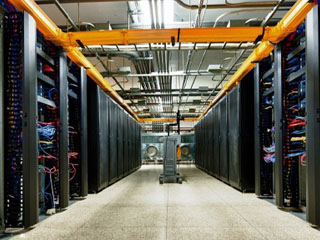The capacity of data centers is reaching new heights. With increasing server density, heat becomes a challenge to overcome. Because of this, new cooling methods are becoming a must.
Traditionally, cooling is derived from fans blowing air over servers and other rack-mounted hardware to cool it off. The bigger the server structure, the more fans needed to take the heat off significantly. But more fans require more significant power consumption. It also has limitations in terms of clearing heat throughout the server space.
Such limitations are now grounds for emerging cooling technologies. Hence, the rise of immersion cooling.
What is Immersion Cooling?
Simply put, immersion cooling is done by submerging the IT hardware and components into a thermally conductive coolant. The coolant is a typical dielectric liquid. By directly immersing the hardware, liquid can hasten the cooling-off of parts. Such a process involves circulating fluid through cool heat exchangers.
What are Dielectric Liquids?

Photo Credit: hackaday.com
Dielectric liquids serve as coolants to the whole IT component submerged in them. In principle, there are different types of dielectric liquid applications.
- Single-phase circulation is a method where a dielectric liquid is circulated across the hot IT hardware in a heat exchanging approach;
- Two-phase immersion incorporates a low-temperature evaporation process. The evaporation enables the transfer of heat from the hardware to the liquid. The gas will be processed in a heat exchange method to cool and be returned through the same liquid.
There are different types of liquid for immersion cooling but can be classified into two main categories:
- Hydrocarbons (mineral, synthetic, or bio-oils)
- Fluorocarbons (fully engineered liquids)
Data Center Application
Datacenter trends are gearing up for bigger workloads. Cloud operators are moving in a hyper-scale that consequently requires more extensive and better IT infrastructure. These systems require better cooling specifications.
- Artificial Intelligence and IT Accelerators – Performance growth of the Central Processing Unit (CPU) is a thing of the past now. Accelerator processors have paved the way for graphics processing units (GPU) and Field Programmable Gate Arrays (FPGA). In turn, the main contributory factor for such a rise is the requirements of enterprise-led data centers. Some GPU-powered data centers are catering to the following IT entities:
- Online Data Mining
- Data Analytics
- Engineering Simulation
- Live Media and Animation
- Fraud Detection
- Load Balancing
The IT requirements are heavy investments that need accelerated systems. Thus, the thermal load will be higher. Immersion cooling is the most feasible cooling arrangement for such system capacity.
- High-Density Storage – Storage requirement continues to expand its market and function. More than storage capacity, efficiency is the more considerable trade. To achieve such efficiency, storage cooling must be up to par. New storage technologies are more flexible to liquid cooling. An example of this is solid-state drives which can benefit from full-immersion cooling. New-generation hardware also has sealing features. This makes them more suitable for immersion cooling.
- Data Center Upgrades – Future data center systems will continue to upgrade. The rise of remote facilities with wireless towers and high-density infrastructure will continue to stretch. Hosting more and more GPU-laden clusters will require more cooling strategies. While there is no guarantee that these IT systems will be feasible under liquid cooling, new technologies now pretty much follow that trend. New IT deployments will need liquid cooling. Traditional cooling options are too limited to compensate for higher densities. Moreover, energy consumptions will be a cause of concern for high-capacity data centers. It is in this nature that liquid cooling remains to be a viable option during system upgrades.
- Blockchain and Trading – Financial services have also been revolutionizing. Because financial services require concrete and accurate data computing, higher CPU and GPU are needed to run it. Some of these applications include:
- high-frequency trading
- blockchain-based application
- smart contracts
- cryptocurrencies
These data center environments undoubtedly will revert to a better cooling solution. It is in this context that immersion cooling can guarantee the computing intensity of their data center infrastructure.
Benefits of Immersion Cooling

Photo Credit: 2crsi.com
Reaping the benefits from an effective cooling method is a vital consideration in its implementation. To consider something to an advantage, effective liquid cooling means that server density can exceed the capacity of the same server in an air-cooled data center. Some of the many benefits from immersion cooling are:
- Low Risks of Hotspots
Because IT hardware is submerged in liquid, there is a lesser probability for a hotspot to occur. More often, the physical makeup of a data center is a factor for heat arising. Poorly designed and blocked conventional IT racks are contributory to hotspots. Liquid immersion cooling negates this disadvantage.
- Long Thermal Ride-Through
The main concern for traditional air cooling is its shorter cooling timeline. When a fan is not functioning, the IT will overheat in a short span. The alternative route to avoid this risky situation is to migrate some IT components. Worst, shutting down the system may sometimes be the end fall.
Immersion cooling, on the other hand, can facilitate more extended cooling periods. The thermal mass of liquid enables more prolonged heat holding. This, in turn, keeps IT hardware cooler for a longer time.
- Cost Efficiency
Server failures occur at the most inopportune time. Couple that with hefty investments in cooling technologies, then costs will more than double. Eliminating some air conditioners may be simple. But this can be a valuable financial return in the long run with no expense to account for.
The liquid cooling will enable such a reduction in cooling facilities. Furthermore, maintenance costs will be kept at a minimum as no more significant cooling equipment will be maintained.
Some Cooling Drawbacks
Like any other cooling technology, immersion cooling still has some disadvantages. One of its crucial stumbling blocks is the infancy of data centers. The IT environment, in as much as upgrading, is still in its infancy phase. The real value of liquid cooling immersion can be realized in the future’s high-density data systems.
Another cause of concern is its highly disruptive nature. Implementing liquid immersion cooling requires a bigger data center configuration from the ground up. It may need changing of IT layout. This prerequisite will hurdle the move to cooling strategy integration.
Liquid maintenance and disposal are also vital factors to take into account. Because dielectric liquids come in some hazardous forms, disposal is undoubtedly a significant consideration. Environmental contaminants are potential health hazards without proper waste management. In this regard, the option for coolant may be limited to lighter, eco-friendly, and non-toxic liquids. It is also important to note that liquids used for coolant have high heat retention.
Achieving Cooling Results with Liquid Immersion + Monitoring Solutions
Despite the many capabilities of cooling technology, it is always wise to have a supporting process to maximize results. It is only imperative that sound monitoring solutions supplement liquid immersion cooling.

Wireless Cabinet Thermal Map
A data center is an ecosystem of IT components that runs with few timeouts. It is in its nature to operate at optimum capacity to yield efficient data yields. As such, limiting heat through a cooling strategy can only do so much. Better data center management invests in monitoring technologies that will amplify optimum IT operation.
Datacenter monitoring solution from AKCP has an end-to-end capacity to track data centers. AKCP provides traditionally wired and wireless sensor technology. Its Wireless Tunnel System builds upon LoRa technology that initiated rapid deployment, easy installation, and a high level of security.
These sensors, when connecting to the AKCPro Server DCIM, centralizes the monitoring data for easy access. Through special monitoring solutions and customized monitoring of cabinets and containment aisles can be achieved. As such, granular visibility of the data center can be incurred through:
- Thermal Mapping
- Differential Pressure Reading
- Current and Power Data
- RFID Access Control Security
- Sensor Light Status
Having such intelligent features can capture higher checking levels. Monitoring of environmental conditions, especially temperature, is also essential. These AKCP Solutions assure that temperature monitoring is precise and accurate. These details are vital in ensuring lesser downtime and longer IT life.
Embracing a New Way of Cooling
While there are many reasons to invalidate the value of immersion cooling, its potential promise is hard to come by. Cooling strategies are, of course, dependent on the data center as a whole. But the current trend towards high-density servers suggests that it is only time for liquid immersion cooling to become a mainstream cooling strategy for many.
Adoption of immersion cooling will need a few more convincing. Beyond the high-density prerequisites, the promise of energy efficiency is significant. Integrating immersion cooling incurs lower operating costs as well. These advantages put forward that immersion cooling is a definite game-changer.
Embracing a new cooling strategy is not something to jump the gun indeed. It takes a significant amount of planning. But cooling methods are not an end-all solution to optimum data center management. Ultimately, it needs crucial pieces also such as sound monitoring systems. While deciding on a change in cooling methods, it is critical to consider monitoring supplements as well.
Achieving an excellent cooling strategy and a sound monitoring solution is a right path to follow.
References Links:
https://datacenterfrontier.com/liquidcool-immersion-cooling-server-chassis/
https://en.wikipedia.org/wiki/Immersion_cooling#cite_note-1
https://www.datacenterknowledge.com/uncategorized/dck-must-know-top-data-center-news-week-august-6-2021
https://searchdatacenter.techtarget.com/feature/Liquid-immersion-cooling-relief-for-ultra-dense-data-centers





